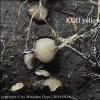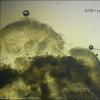
09-11-2025 13:20
Hello.A tiny ascomycete, appearing as erupting gra

08-11-2025 00:29
 Francois Guay
Francois Guay
I found this species in Quebec, Canada, on herbace

04-11-2025 09:07
Hello.A suspected Hymenoscyphus sprouting on a thi

04-11-2025 12:43
 Edvin Johannesen
Edvin Johannesen
Hi! One more found on old Populus tremula log in O

03-11-2025 21:34
 Edvin Johannesen
Edvin Johannesen
These tiny (0.4-0.5 mm diam.), whitish, short-stip
Mollisia?
Castillo Joseba,
05-12-2020 10:55
Pienso en Mollisia cinerea
A ver que os parece
Saludos
Joseba
Mirek Gryc,
05-12-2020 12:38
Re : Mollisia?
Hi Joseba
The dry material in the case of Mollisia is very difficult and it is usually impossible to define the genre with certainty.
However, if you would like to continue your research, you should first of all check the reaction to KOH.
best regards
Mirek
The dry material in the case of Mollisia is very difficult and it is usually impossible to define the genre with certainty.
However, if you would like to continue your research, you should first of all check the reaction to KOH.
best regards
Mirek
Luc Bailly,
05-12-2020 12:42
Re : Mollisia?
Bonjour Joseba,
Spores trop grandes et trop guttulées.
Il faut en outre vérifier si les paraphyses sont réfringentes ou non, et si elles jaunissent ou non dans le KOH. (chez M. cinerea, elles sont réfringentes mais ne réagissent pas ou quasiment pas au KOH)
Avez-vous la clé faite par Andreas Gminder?
Castillo Joseba,
05-12-2020 12:49
Castillo Joseba,
05-12-2020 14:50
Luc Bailly,
05-12-2020 15:31
Re : Mollisia?
Bonjour Joseba, voici la clé.
Alors, c'est en macroscopie, sous la loupe binoculaire, qu'il faut observer la réaction des paraphyses. Vous plongez un morceau de l'ascome dans le KOH 5%, et vous regardez sous la loupe si ça jaunit ou pas.
Castillo Joseba,
05-12-2020 19:29
Re : Mollisia?
No dispongo de lupa binocular, daria el mismo resultado poniendolo en un porta y mirandolo con el objetivo x40 con el micro con luz indirecta ?
Luc Bailly,
05-12-2020 21:49
Re : Mollisia?
Tant qu'on puisse voir la réaction jaune...
Mirek Gryc,
06-12-2020 07:54
Re : Mollisia?
Hi Joseba
There are two ways to check the reaction to KOH.
1) Without the use of a microscope. We apply KOH directly to the fruiting body and observe if the hymenium changes its color.
2) We observe a fruiting body fragment immersed in a KOH drop under the microscope. We do not cover the preparation with a slide. The best lenses for this purpose are: X5; X10.
see photos;
Mirek
There are two ways to check the reaction to KOH.
1) Without the use of a microscope. We apply KOH directly to the fruiting body and observe if the hymenium changes its color.
2) We observe a fruiting body fragment immersed in a KOH drop under the microscope. We do not cover the preparation with a slide. The best lenses for this purpose are: X5; X10.
see photos;
Mirek
Jean-Paul Priou,
07-12-2020 17:59

Re : Mollisia?
Not all Molisia KOH +, have strongly koh reaction like rosea-prunicola, and as Mirek writes, microsocpic observation is essentia. But some reactions are fleeting and sometimes the yellowing of paraphyses contents disappear immediately. It's better put the phragment on slides in Water and better to add the koh on the edge of the coverslip...
and don't take your eyes off the lens when the koh arrives !
and don't take your eyes off the lens when the koh arrives !
Castillo Joseba,
08-12-2020 09:14
Re : Mollisia?
Muchas gracias a todos ... creo que he aprendido algunas cosas para observar Mollisias
Joan-Paul... gracias por tu comentario, ha sido el mas efectivo y he podido ver una reacción al amarillo que ha durado menos de medio minuto
Joseba
Joan-Paul... gracias por tu comentario, ha sido el mas efectivo y he podido ver una reacción al amarillo que ha durado menos de medio minuto
Joseba

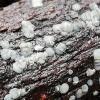
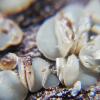
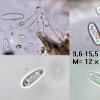
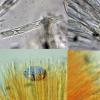
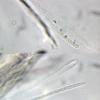

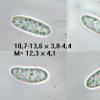
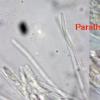
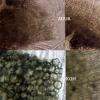
 Mollisia-key-Gminder-0001.doc
Mollisia-key-Gminder-0001.doc